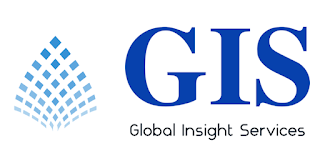Market Overview
The quantum photonics market is emerging as one of the most revolutionary segments in advanced technology, poised to redefine how information is processed, communicated, and sensed. Quantum photonics harnesses the principles of quantum mechanics using photons—the elementary particles of light—to enable ultra-secure communication, high-speed computation, and precise sensing capabilities. As of 2024, the market is witnessing an uptick in adoption, driven by increased demand for quantum-based systems in fields such as telecommunications, defense, and healthcare.
The market covers a diverse range of components and technologies, from single-photon and entangled photon sources to sophisticated applications in quantum computing, sensing, and communication. The growing utilization of materials like silicon, indium phosphide, and gallium arsenide has enabled compact and efficient photonic devices. Additionally, functional devices such as optical circulators, isolators, and amplifiers play a pivotal role in system integration.
Click to Request a Sample of this Report for Additional Market Insights:
https://www.globalinsightservices.com/request-sample/?id=GIS25232
Market Dynamics
Several key drivers are propelling the quantum photonics market forward. First, the rising emphasis on secure communication has fueled the adoption of quantum cryptography. As global threats to cybersecurity grow, quantum key distribution (QKD) is seen as a future-proof solution. Second, the race to develop quantum computers is intensifying, with quantum photonics forming the hardware backbone for many proposed systems. These devices offer superior coherence times and operational speeds compared to traditional quantum systems.
On the other hand, the market does face challenges. The complexity of quantum photonic system integration, high initial costs, and the need for specialized talent are barriers to rapid deployment. However, ongoing investments in R&D, government funding, and academic-industry collaborations are mitigating these hurdles.
Technological advancements are also playing a major role. Integrated photonics, photonic crystals, and quantum dots are opening new doors for scalable quantum systems. Additionally, services such as consulting, integration, and maintenance are evolving to support end-users in implementing these cutting-edge technologies.
Key Players Analysis
The quantum photonics market features a mix of startups, academic spin-offs, and major tech corporations. Companies such as ID Quantique, Toshiba, IBM, and Xanadu Quantum Technologies are leading the way in deploying quantum communication and computing platforms. Meanwhile, hardware suppliers specializing in detectors, beam splitters, and waveguides such as Thorlabs and Hamamatsu Photonics provide critical components necessary for building quantum photonic devices.
Additionally, players like PsiQuantum and QuiX Quantum are working on integrating photonic quantum systems for scalable quantum computing applications. Many of these companies are actively forming partnerships with research institutions and national laboratories to fast-track innovation and commercialization.
Regional Analysis
North America dominates the quantum photonics market, supported by strong government initiatives, active private sector investments, and a robust innovation ecosystem. The U.S. has been at the forefront with initiatives such as the National Quantum Initiative Act and various Department of Defense programs aimed at fostering quantum technology development.
Europe follows closely, particularly with countries like Germany, the Netherlands, and the UK, where academia-industry synergy is high. The European Quantum Flagship program has been instrumental in promoting cross-border collaboration and funding R&D efforts.
Asia-Pacific is witnessing rapid growth, driven by massive investments from China, Japan, and South Korea. China, in particular, is aggressively pursuing quantum communication infrastructure, including satellite-based QKD networks.
Recent News & Developments
In recent years, the market has seen significant developments. For example, Toshiba launched a commercial QKD system for data centers, while Xanadu introduced its photonic quantum computing cloud platform. Meanwhile, researchers at MIT and Caltech have made strides in photonic crystal and quantum dot development, offering promising scalability.
In 2024, several partnerships were announced between quantum startups and telecom giants to integrate quantum encryption into fiber networks. Governments worldwide continue to invest in national quantum missions to stay competitive in the technological arms race.
Browse Full Report @ https://www.globalinsightservices.com/reports/quantum-photonics-market/
Scope of the Report
The future of the quantum photonics market looks highly promising. With applications expanding in quantum computing, sensing, and secure communication, the technology is no longer confined to academic labs but is steadily moving toward real-world deployment. As integration services become more mature and the cost of components drops, adoption across industries like telecommunications, healthcare, automotive, and aerospace will rise.
From passive and active components to advanced materials and devices, the ecosystem is growing rapidly. The report covers granular details on product types, end-user segments, regional trends, and competitive landscapes, making it a comprehensive guide for stakeholders aiming to navigate or invest in this transformative space.
Discover Additional Market Insights from Global Insight Services:
Advanced Optics Market:
https://www.globalinsightservices.com/reports/advanced-optics-market/
RJ45 Connectors Market:
https://www.globalinsightservices.com/reports/rj45-connectors-market/
Connector Market:
https://www.globalinsightservices.com/reports/connector-market/
Microcontroller IC Market:
https://www.globalinsightservices.com/reports/microcontroller-ic-market/
Vibration Analyzer Market:
https://www.globalinsightservices.com/reports/vibration-analyzer-market/
